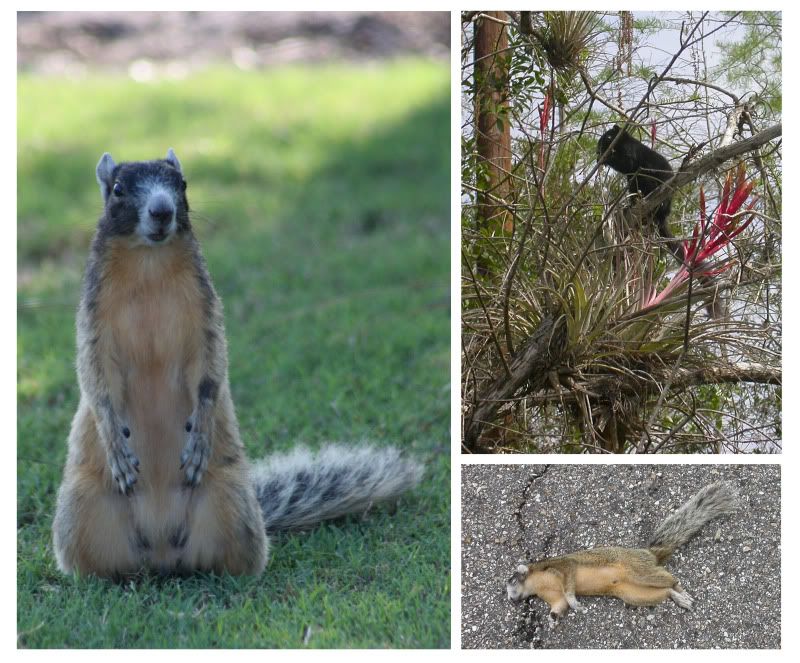The Big Cypress Fox Squirrel (Sciurus nigra avicennia), is an endemic subspecies here
in southwest Florida Gulf of Mexico . Unlike most of Florida
Golf course BCFS have been shown to be more gregarious. They
mate year round and are less susceptible to food shortages. Land managers have
helped protect the species by leaving natural vegetation and planting trees,
shrubs and grasses around the golf courses that specifically benefit the BCFS.
The problem is sustainability. Increasingly these squirrel-occupied urban
islands become more separated from natural communities and any link to other
populations requires hazardous and often fatal road crossings.
Additionally, foraging around a golf course may seem like
the life of leisure but without the protection of a forest canopy the squirrels
must keep an eye skyward for birds of prey.
Their relaxed social standards could put them at risk as
well. Normally solitary, golf course squirrels that congregate are at greater
risk of spreading diseases to one another like Squirrel Poxvirus. A BCFS was
found to be infected in 2010 and although an outbreak has not been reported,
the virus is spread by contact and would have the greatest impact on sociable
squirrels.
Golf courses have benefited BCFS to a degree but ultimately
these populations must remain connected to their backwoods neighbors or they
are all doomed. Will anyone miss them when they’re gone?


Do the social squirrels get together for cocktails at the clubhouse in the afternoon? Interesting to think of golf courses as habitat.
ReplyDeleteI need to post another picture. The mama squirrel was sliding on her belly around the green searching for food. Truly enjoying foraging.
ReplyDeleteHello. My name is John Kellam and I am a biologist with the National Park Service at Big Cypress National Preserve. Since 2007, I have been the lead biologist on the first successful home range and habitat use study of the Big Cypress fox squirrel in its natural environment.
ReplyDeleteWhile searching online for Big Cypress fox squirrel images, I saw your images of one eating a Tillandsia stem - these are great photos! I am putting together a fox squirrel PowerPoint presentation for the preserve and would love to have your photos be used in it, as one of the eating food items examples. I would put your name and copyright image on each photo; your images would only be used for the PowerPoint.
I can be contacted at: office 239 695 1173
Email: john_kellam@nps.gov
Or
johnkellam@hotmail.com
Thanks, John